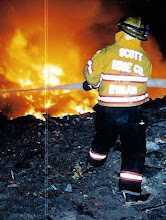Fireman Mose Humphreys was played by
actor Frank Chanfrau in thousands of performances on stages throughout the
country in the 1840s and 1850s. Although
nine scripts were written, only one survives.
He became an urban folk hero; the personification of New York firemen
and to some degree, all volunteers of the day.
Mose was a cigar smoking, heavy drinking,
hard fighting, baby rescuing, rowdy fireman who stood for good against con-men,
crooks, and politicians. Think Denis
Leary before there was Denis Leary. The
working class of the day related to the character and stories as he protected
the community, rescued “damsels,” and fought the politicians. The middle class viewed him differently as a
symbol of societal unrest.
 In today’s world with the pervasive presence
of social media, you tube, and myriad other forms of entertainment, this past
history is interesting in showing that public perception being shaped by art is
not new. There was no actual Mose, but
his character was based—with obvious fictional liberties—on the characteristics
observed in firemen of the day. That a
fictional character influenced public debate and change in the fire services of
the day should be instructional to us.
Who is more real; Tommy Gavin or Johnny and Roy?
In today’s world with the pervasive presence
of social media, you tube, and myriad other forms of entertainment, this past
history is interesting in showing that public perception being shaped by art is
not new. There was no actual Mose, but
his character was based—with obvious fictional liberties—on the characteristics
observed in firemen of the day. That a
fictional character influenced public debate and change in the fire services of
the day should be instructional to us.
Who is more real; Tommy Gavin or Johnny and Roy?
The performances in the 1800s resulted
in something more than just entertainment.
They provided fuel for debates on fire department reform, particularly
in cities which experienced firefighter violence. While many historians today agree that the
early stories of firemen fighting each other on scenes were overblown and not
as widespread as legend has it, the instances which did occur were likely
magnified by the fictional portrayal.
Mose became a caricature, and as he grew in popularity, so did the
inaccurate perceptions that all firefighters were involved in violent behavior.
 In today’s world with the pervasive presence
of social media, you tube, and myriad other forms of entertainment, this past
history is interesting in showing that public perception being shaped by art is
not new. There was no actual Mose, but
his character was based—with obvious fictional liberties—on the characteristics
observed in firemen of the day. That a
fictional character influenced public debate and change in the fire services of
the day should be instructional to us.
Who is more real; Tommy Gavin or Johnny and Roy?
In today’s world with the pervasive presence
of social media, you tube, and myriad other forms of entertainment, this past
history is interesting in showing that public perception being shaped by art is
not new. There was no actual Mose, but
his character was based—with obvious fictional liberties—on the characteristics
observed in firemen of the day. That a
fictional character influenced public debate and change in the fire services of
the day should be instructional to us.
Who is more real; Tommy Gavin or Johnny and Roy?






